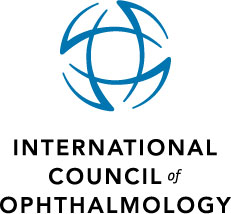| Pseudoexfoliation Syndrome (PEX) | |
| Pseudoexfoliative material deposited on the anterior lens capsule in the classical -"3 ring sign" - A central disc and peripheral disc of pseudoexfoliative material with an intervening clear zone created due to constant rubbing of the iris on the lens capsule. This is a classical late stage of deposition of PEX-material on the anterior lens capsule. The rub off zone between the central disc and the preequatorial zone usually starts nasal superiorly- due to the contact of pupillary motility and anterior lens surface. The focal rub off is called MiniPEX. Preclinical stages of uniform precapsular layer of deposition are defined as Pex suspect. Masked PEX results from posterior circular synechiae which prevent mydriasis and then mask the inspection of the lens. Masked stage of PEX must be considered if other causes of posterior synechiae are excluded. The clinical diagnosis from inspection can be confirmed by ultrasound biomicroscopy. It becomes obvious intraoperatively after mechanical mydriasis and signals zonular instability. | |
| Ramgopal, Balu, M.D., Narayana Nethralaya, Bangalore, India | |
| H40.1 | |
| Systemic Diseases -> Pseudoexfoliation Syndrome (PEX) -> Lens | |
| Glaucoma, PEX, systemic diseaes | |
| 6684 |
|
|||||||||||||||
Pseudoexfoliation Syndrome (PEX)-------------------------- -------------------------- -------------------------- -------------------------- -------------------------- -------------------------- -------------------------- -------------------------- -------------------------- -------------------------- -------------------------- -------------------------- |
|
||||||||||||||




